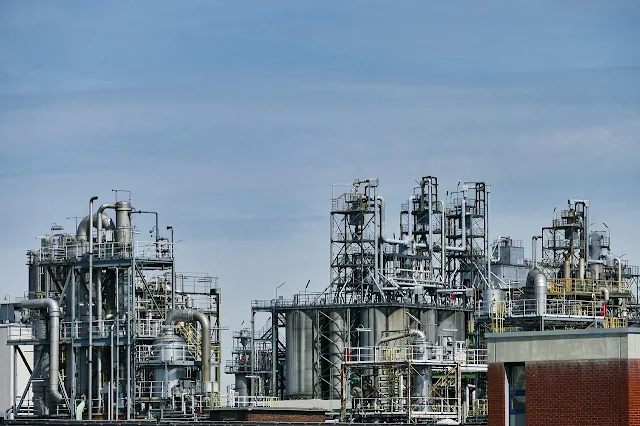Ad Code
Translate
List of 6,000+ Dofollow Commentluv Blogs FREE (Updated 2025)
January 16, 2025
What is Ozempic (semaglutide)? (Updated in 2025)
January 30, 2025
How To Find Suitable Properties In Cyprus? (Updated in 2025)
January 11, 2025
Smart strategies for trading on crypto exchanges
February 18, 2025
Ensuring Safety: Best Practices in the Oil and Gas Industry
Zizo Gala-Mkhize
November 28, 2023
The oil and gas industry is vital to the global economy, powering transportation, heating homes, and providing raw materials for various industries. However, the nature of oil and gas operations involves inherent risks that demand stringent safety protocols to safeguard personnel and the environment. Implementing and adhering to best practices in safety is paramount to mitigate these risks effectively.
Let's delve into some key strategies and practices crucial for ensuring safety within this industry.
Comprehensive Risk Assessment
Conducting thorough risk assessments is a cornerstone of safety in the oil and gas sector. Identifying potential hazards at every stage of operations—be it exploration, drilling, extraction, transportation, or refining—is critical. Evaluating risks associated with equipment failure, human error, natural disasters, or environmental impacts is essential in preemptively addressing and minimizing potential threats.
Emphasis on Regular Safety Training
Continuous education and training play a pivotal role in maintaining a safety culture within oil and gas companies. Employees need to be well-versed in safety protocols, emergency procedures, and the correct use of personal protective equipment (PPE). Regular safety drills and workshops refresh existing knowledge and ensure that personnel are equipped to handle unforeseen situations efficiently.
Strict Adherence to Regulations and Standards
Governed by strict regulations, the oil and gas industry prioritizes safety and environmental responsibility. Compliance with these standards is vital for workforce well-being and environmental protection. Collaboration within the industry is crucial for growth and sustainability. Innovating towards sustainability while meeting operational needs is critical to the industry's future.
Rigorous Equipment Maintenance and Inspection
Regular maintenance and inspection of machinery, susceptible components like heat exchangers using miniature fin tubing, are vital for worker safety and accident prevention. Preventive maintenance schedules are crucial to keep these delicate parts in top condition.
Without proper care, these components are prone to breakdowns, leaks, or malfunctions, leading to hazardous situations. Thus, companies need to prioritize proactive measures, ensuring the safety of employees by regularly maintaining and inspecting all equipment and machinery.
Robust Emergency Response Planning
Preparedness is key. Creating and regularly reviewing emergency response plans is essential to swiftly and effectively manage unforeseen incidents. These plans should encompass procedures for spills, fires, gas leaks, and other potential emergencies.
Mandating Personal Protective Equipment (PPE) Usage
The oil and gas industry, crucial as it is, poses significant dangers to workers due to potential hazards like gas leaks and fires. Personal protective equipment (PPE), including helmets, gloves, masks, and fire-resistant clothing, is essential for worker safety. Employers must ensure access to and proper use of appropriate PPE, investing in worker wellbeing and fostering a safer workforce.
Encouraging Behavior-Based Safety Programs
A culture that prioritizes safety starts with the behavior of individuals. Implementing behavior-based safety programs encourages employees to actively participate in safety initiatives, fostering a mindset where safety becomes a personal responsibility.
Cultivating a Strong Safety Culture
A robust safety culture is cultivated when safety becomes an inherent part of the organizational DNA. Companies need to encourage open communication, promote reporting of near-misses, and ensure that safety concerns are addressed promptly.
Continuous Improvement and Learning
Learning from incidents, near-misses, and industry advancements is crucial for improvement. Analyzing past incidents and applying those learnings to enhance safety measures is pivotal for preventing future accidents.
Integrating Environmental Stewardship
Modern society depends on oil and gas to fuel our daily lives, but we must also consider the impact these operations have on our environment. Ensuring safety extends beyond protecting individuals and includes safeguarding our planet. Incorporating environmental considerations into safety practices is critical to minimizing the ecological footprint of oil and gas operations.
Focusing on cleaner and renewable energy sources, reducing carbon emissions, and minimizing waste can all significantly impact protecting our environment.
In Conclusion
Safety is a crucial aspect of the oil and gas industry, and companies must be vigilant to ensure it. The challenges of this industry demand a comprehensive approach that addresses every possible risk. Practical risk assessment, extensive training, adherence to regulations, maintenance protocols, emergency preparedness, and a safety culture are all necessary for creating a safe working environment.
When companies prioritize these best practices, they can significantly reduce risks and make operations more sustainable and secure. In short, safety is not an option in this industry but a necessity. By working together, we can protect people, protect the environment, and keep everyone safe.
Featured Post
12 Prominent new technologies and trends emerging in 2025
Khabza Mkhize-
April 02, 2025
Soapie Teasers
Sister Sites
Most Popular
List of 6,000+ Dofollow Commentluv Blogs FREE (Updated 2025)
January 16, 2025
Smart strategies for trading on crypto exchanges
February 18, 2025
Popular posts
List of 6,000+ Dofollow Commentluv Blogs FREE (Updated 2025)
January 16, 2025
Smart strategies for trading on crypto exchanges
February 18, 2025
Footer Menu Widget
Created By Blogspot Theme | Distributed By Gooyaabi Templates


0 Comments